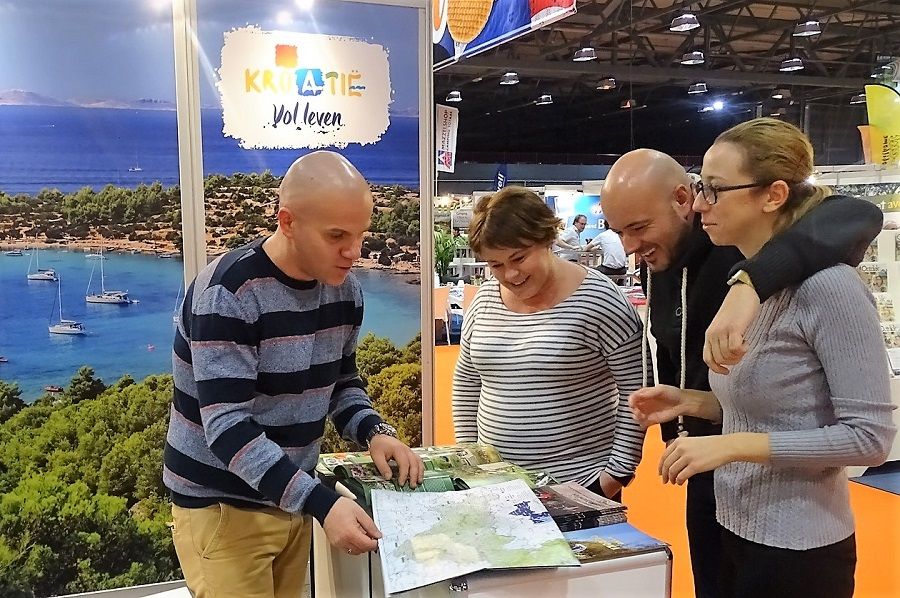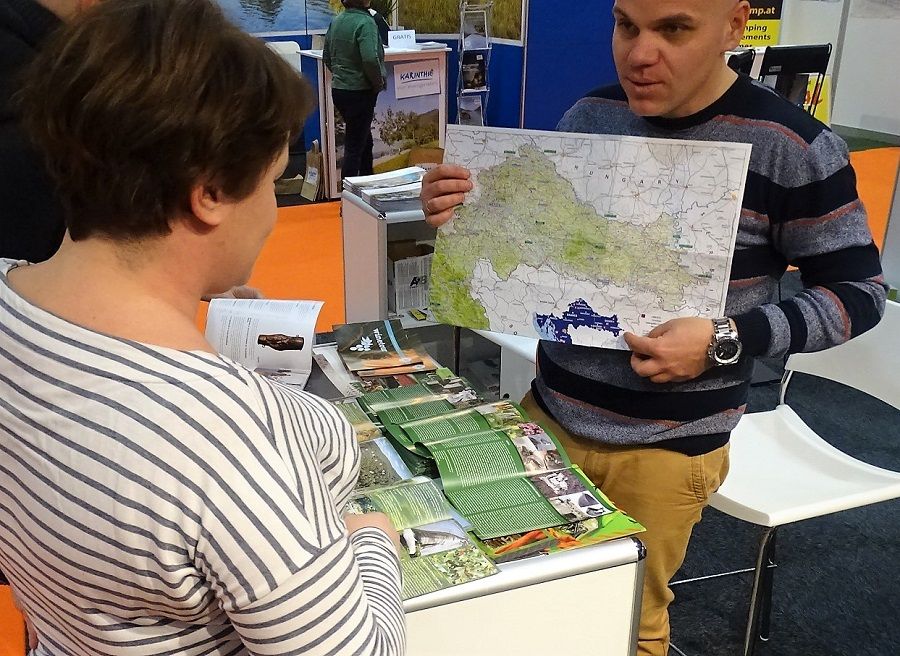Gastronomy Increasingly Important to Croatian Tourism
ZAGREB, February 19, 2019 - Tourism Minister Gari Cappelli on Tuesday underlined the importance of gastronomy and excellence in gastronomy professions in enhancing the quality of Croatian tourism.
Speaking at Open Day of Aspira college in Zagreb, Cappelli said that today it was perhaps even more honourable to be a chef because gastronomy increasingly motivated people to travel. He said Aspira and its gastronomy study programme in Zagreb and Split as well as the 100 students who enrol in it every year confirmed the validity of such studies.
Cappelli recalled that the Tourism Ministry had awarded 370 scholarships this year in cooperation with more than 20 tourism companies and chambers, saying jobs in tourism were increasingly in demand in Croatia and abroad.
The minister said he hoped more schools, both private and public, would offer gastronomy programmes in the future, especially in about two years when competency centres, teaching tourism and gastronomy, among other things, with more practical work, became operational.
The Aspira college operates in Split and in Zagreb, where a gastronomy study programme was introduced two years ago. The college also teaches tourism and other programmes. About 450 students enrol at the two schools every year, including 100 to study gastronomy.
The annual tuition fee at Aspira is 30,000 kuna for the tourism study programme and 40,000 kuna for the three-year gastronomy programme.
More news on the Croatian tourism can be found in the Travel section.
Vukovar Gets New Tourism Video Ad
ZAGREB, February 18, 2019 - Vukovar has a new tourism video advertisement presenting the attractions of that eastern Croatian town on the Danube River which, according to the town's tourism board, is attracting more and more tourists each year.
The video ad was shot under the auspices of the town's authorities and the local tourist board and was premiered to reporters this past Wednesday, with Mayor Ivan Penava saying that it was aimed at increasing the number of tourist arrivals to the town as part of the strategy to develop Vukovar's tourism potential.
"All this is in line with efforts to make Vukovar more attractive for tourists, which is a long-standing process. The tourist trade in Vukovar is on the rise and the town's potential in that regard is developing year in and year out," said Penava.
A total of 125,000 kuna was invested in shooting the video, 20,000 kuna of which came from the Tourism Ministry, while the remaining funds were provided by the town's authorities.
According to the director of the loca Tourist Board, Marina Sekulić, the number of bed nights in the town increased by 4% in 2018 compared to the year before, while the number of tourist arrivals remained at the same level.
"With all the visitors that come to Vukovar for one day to visit the Homeland War memorial centre, more than 120,000 people visit Vukovar each year," Sekulić said and added that the Vučedol Museum recorded more than 200,000 visitors since it opened two and a half years ago.
She also said that 231 cruise boats had visited the town with a total of 31,972 passengers and that the city expects 240 cruise boats this year.
More news about Vukovar can be found in the Lifestyle section.
Increased Wages the Key for Retaining Tourist Workers
ZAGREB, February 13, 2019 - Without sufficient and qualified workers, there can be no successful tourism, which has seen a deficit in the labour force over the past few years and in order to attract and keep tourist workers, it is necessary to foremost increase their earnings so that they are more like those in neighbouring EU countries, which means that employers should be further unburdened, a conference on workers in tourism heard on Tuesday.
The conference, organised by the Ministry of Tourism, the Večernji List daily and Poslovni Dnevnik business daily, brought together representatives of the tourism industry, consultants, students, representatives of the Croatian Chamber of Commerce (HGK) and Croatian Employers' Association (HUP) as well as Tourism Minister Gari Cappelli, Labour Minister Marko Pavić and Agriculture Minister Tomislav Tolušić. They agreed that importing workers should be a back-up option to resolve the lack of workers in tourism and in other areas too, and that it was primarily necessary to activate the local labour force, particularly from the pool of 160,000 unemployed persons.
"Import quotas for workers should be an alternative but a possible option which is important for tourism. This year, 15,000 permits are 'on the cards' and we don't have to issue them all. It is good though that we have that as an option, because the problem of the lack of workers obviously exists and other countries in Europe are experiencing this too," Tourism Minister Gari Cappelli said.
The director of the Croatian Tourism Association (HUT), Veljko Ostojić, considers that not a lot would be achieved in the next two or three years unless wages in tourism go up by 30% to 40% or at least 10% each year.
More news on the Croatian tourism can be found in the Travel section.
La Casa di Matiki Voted Best Bed and Breakfast in Croatia
The beautiful vacation facility La Casa di Matiki in Žminj near Pazin in Istria has been named by TripAdvisor as the best bed and breakfast in Croatia for this year. It is an award given on the basis of comments from the website’s guests, who evaluate the service, location, price-quality ratio, cleanliness, and even the quality of sleep. “A wonderful stay in rural Croatia," commented one of the guests. This is the fifth year that Trip Advisor has named Casa Matiki as one of the 25 best bed and breakfasts in Croatia, reports Jutarnji List on February 2, 2019.
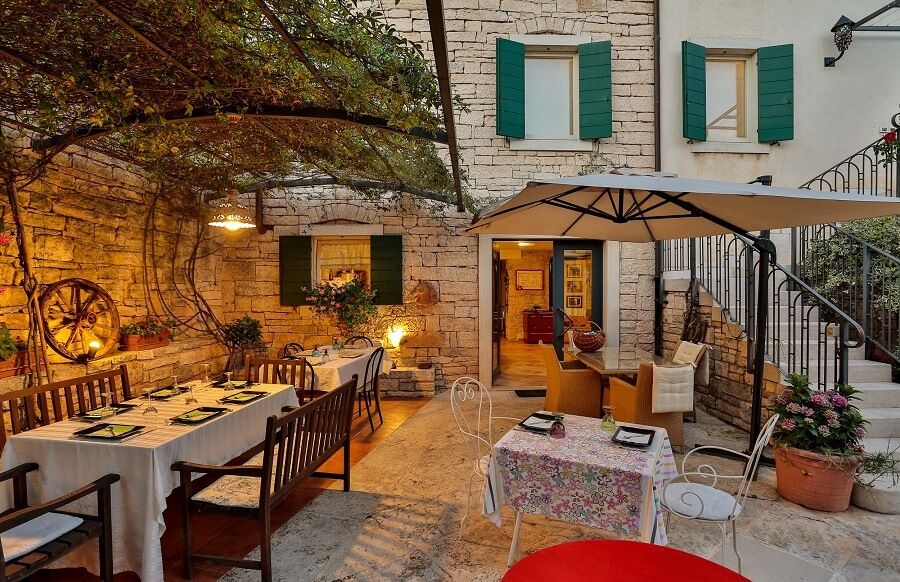
The property is managed by Sonja Glavić, who has created the whole concept of this rural bed and breakfast, which offers a lot more than a regular vacation home. She started the business in 1997 and is considered one of the pioneers of rural tourism in Istria. In addition to the two houses with four apartments, where she also offers homemade breakfasts, she has remodelled another building with two suites that are marketed as a farm household. As an additional amenity, the tourists can look at and feed domestic animals since the property has a flock of sheep, several donkeys and horses.
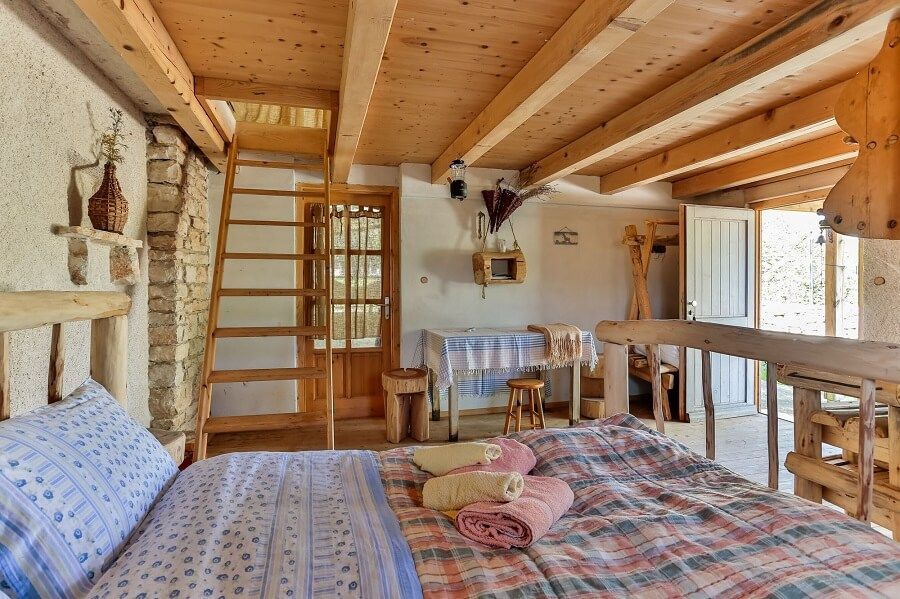
The barn, where the hay is stored, has a separate area for tourists with a bedroom and a bunk bed, with a mattress filled with dry maize leaves. The room is decorated with hay bales that are used for practical purposes – to feed the animals in the morning. Above the small room, there is a loft in the low attic where you can ponder about this unusual experience.
“I decided to do it first and foremost for myself because this has returned me to the days gone by. Also, the idea of sleeping in the barn was given to me by a French group of tourists,” Glavić said.
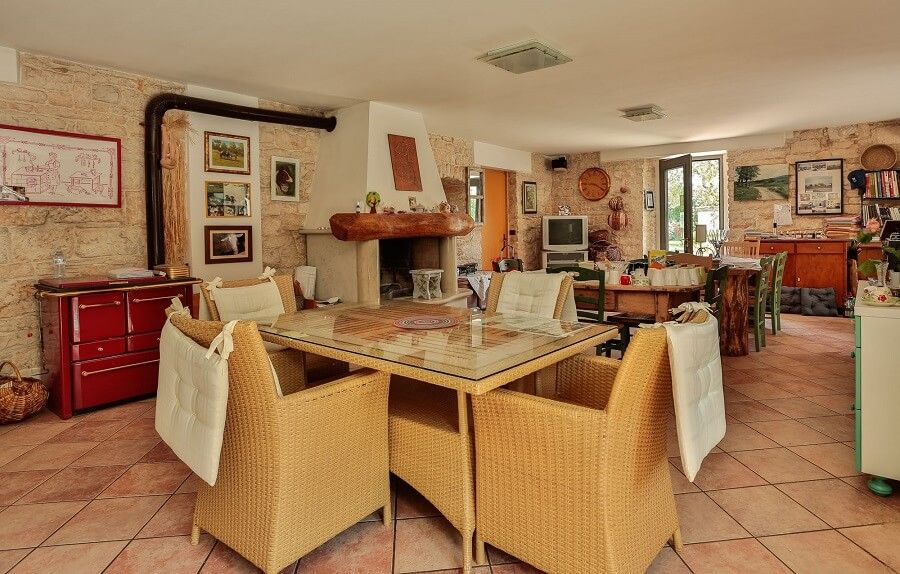
All those who come here on vacation can, therefore, be in direct contact with domestic animals. On the table, they can find local products of this area, as well as homemade bread, jams and fresh eggs. The owner of the luxuriously decorated facility says that the tourists have become more than guests.
"My dream was to welcome people from all over the world, and that dream has come true. I sometimes feel like a guest myself, and I consider my guests as hosts. The guest has to feel like a royal,” said the owner of the property in the interior of Istria, demonstrating how a different approach to business can bring tourists to the Istrian hinterland all year round.
Translated from Jutarnji List (reported by Barbara Ban).
More news on Istria can be found in the Travel section.
100 Million Euros to Be Invested in Golf Resort on Cres
It took three years from the initial announcement to the finalisation of the first phase of the preparation of project documents, but that is how things work in Croatia, especially with projects which have never been seen before. And the golf resort on Cres, in the Punta Križe area, is definitely among them, reports Jutarnji List on January 31, 2019.
For this project, the investor, the Jadranka Group, has made an agreement with the Krk Diocese for the use of about 320 hectares of land for 50 plus 50 years. It has also hired Ernie Els to design two championship golf courses with 18 holes.
The Matalda golf project recently passed a round of voting at the County Assembly, which adopted amendments to the spatial plan of the Primorje-Gorski Kotar County, which now include the golf course location, removing the main administrative obstacle. Before this, the project passed the public consultation process and was discussed by the Cres and Mali Lošinj town councils, where majorities also supported it.
According to Sanjin Šolić, the CEO of Jadranka, the goal is to improve the quality of the entire destination to a five-star level. As Šolić points out, Jadranka plans to invest around 100 million euro in the golf project, in addition to almost 200 million euro which the company has already spent on the nearby island of Lošinj.
“We now have basic legal preconditions for golf resort to be planned at this location. The spatial plan earlier had another location earmarked for golf, but it was not interesting for us for many reasons, from the ground configuration to the ownership structure. Matalda has proven to be ideal for golf, and we have launched an initiative that has succeeded after three years. After initial doubts, the County has accepted it,” said Šolić, showing a comprehensive analysis which Jadranka commissioned.
“We also have a study of socio-economic justification of the project, drafted by the Hotel Faculty in Opatija. The area in question is protected, but golf is possible there with the protection measures we intend to implement. Now we have the right to prepare a draft project that must be approved by the state commission appointed by the Ministry of Environmental Protection. This means that another environmental impact study will be done, the third one,” explained Šolić.
The total project area is 320 hectares, and the two golf courses that Jadranka plans to build will cover less than 20 per cent of the land. “Buildings will cover just two per cent of the total area. There will be a single hotel that, according to the County decision, cannot be for less than 500 people. The total capacity allowed is 800, which means no fewer than 500 people in the hotel, and no more than 300 people in the villas. As far as the docks are concerned, a classic marina is not allowed. However, there is a possibility of having a helicopter landing spot,” said Šolić.
He added that it was impossible to discuss precise figures since the project has not yet been developed and it is still unknown whether they will build it in stages or all at once. “When everything is done, I doubt it can be less than 100 million euro," said Šolić. He also added that it was difficult to talk about timelines because they cannot influence how much time state bodies will need to make a new environmental impact study, but he believes that the construction of the first course could begin in 2020.
He noted that golf by itself was not profitable. “What is important to us is that golf will fill our accommodation units out of the main tourist season. Our hotels will be filled all year round. Another great effect is marketing. The fact that golf will be present on Lošinj and Cres will ensure that a special group of guests will hear about the island and want to come here.”
As for local critics of the project, Šolić explained they are a negligible minority. “Whatever people do, they are always criticised by the same group, without any real arguments. Strategic assessment and environmental impact study prove that there is no risk of adverse effects on nature. We took all segments of nature protection into account,” said Šolić.
More news on golf projects in Croatia can be found in the Lifestyle section.
Translated from Jutarnji List (reported by Luka Benčić).
Croatia Among Top 5 Most Popular Destinations in US Market
The popularity of Croatia only continues to grow among US travelers.
Croatian Tourism Board Wins Award for Best Video at Madrid Travel Show
ZAGREB, January 26, 2019 - The Croatian Tourism Board (HTZ) won an award for best promotional video in competition with 58 videos presented by 11 countries at the Fitur international travel show in Madrid on Friday, the HTZ said.
The video "Croatia, Full of Life" was promoted on the Spanish market under the title Los Embajadores del Turismo Croata, or Ambassadors of Croatian Tourism. It features footballers Luka Modrić, Ivan Rakitić, Mario Mandžukić, Dejan Lovren and Mateo Kovačić, tennis player Marin Ćilić, basketball player Dario Šarić, painist Maksim Mrvica and the duo 2Cellos.
The Grand Prix Fitur Award was accepted by Viviana Vukelić, head of the HTZ office in Italy, which covers Spain. The award was presented for the first time.
Awards were given in other categories as well, and the videos "We Love Zagreb" and "Dubrovnik Riviera" were shortlisted.
The Fitur fair is one of the largest travel shows in Europe. It opened on Wednesday and closes on Sunday evening. Eight Croatian tourism companies and travel agencies are present at this year's exhibition.
The number of Spanish tourists visiting Croatia increased by 14% in 2018 from the previous year, and their number is expected to continue to grow thanks to new flight services between the two countries and the popularity of Croatia after its national football team reached the World Cup finals in Russia last year.
Croatian destinations are becoming increasingly attractive to Spaniards, and all year round, the HTZ said. Last year, 290,000 Spanish tourists visited Croatia, up 14% over 2017, generating 641,000 bed-nights, which is an increase of 13%.
One of the reasons for the growth are flight services, as five airlines fly between the two countries - Croatia Airlines, Iberia, Iberia Express, Vueling and Norwegian Air.
"We expect a further increase in the number of tourists from the Spanish market, and not just Spaniards, but also visitors from Portugal and Latin America," said Jelena Babić of the Zagreb-based travel agency Abacus Tours.
More news on the Croatian Tourism board can be found in the Travel section.
Slavonian Tourism Presented at Caravana International Camping Fair in Leeuwarden
The largest and most-visited camping fair in the Netherlands was held from 17 to 22 January 2019. One of the more than 400 exhibitors was the Slavonian tourism cluster, which brings together five county tourist boards from the eastern Croatia (Brod-Posavina, Osijek-Baranja, Požega-Slavonia, Virovitica-Podravina and Vukovar-Srijem counties), in cooperation with the Croatian National Tourist Board (HTZ).
Leeuwarden (West Frisian: Ljouwert) is a town in the north of the Netherlands, and it is the capital of the province of Friesland. In 2018, it was the European Capital of Culture. It is also known as the birthplace of Mata Hari (Margaretha Geertruida Zelle).
The Netherlands is known as a camping nation, and Caravana was a great venue to represent four Slavonian camps. These were two camps from Požega-Slavonia County (the Zlatni Lug camp located in the Požega suburb of Emovački Lug, and the Duboka camp located in Velika in the Papuk Nature Park), and the Familiy camp in Kopačevo and the Suza Baranje cyclo-tourist camp in Suza.
At the HTZ stand, the Slavonian cluster was represented together with the Camping Association of Croatia, the Rovinj naturist camp Valalta, and the Hadria company, headquartered in Novalja on the island of Pag.
In addition to the camps themselves, the entire tourist offer of Slavonia is presented. The Papuk Nature Park, with the Duboka campsite located at its southern edge, attracted the attention especially thanks to its protected areas, such as the Jankovac Forest Park, the Rupnica geological nature monument, and the Old Oaks special forest preservation area, and with the cultural-historical heritage (the medieval Velički-Grad, the Ružica-Grad and Kamengrad), as well as with tourist facilities (cycling trails, the Orahovica Lake recreational area, the Sokoline sports climbing facility).
The visitors were also introduced to the Kopački Rit Nature Park, as a sizeable inner delta of the Danube river and part of the "European Amazon", with its unique biodiversity, including more than 300 species of birds, making it an ideal destination for birdwatching.
The Virovitica-Podravina County was presented as an area of Slavonia with part of the Mura-Drava Regional Park and the Papuk Nature Park. In-between these two protected natural areas, there is a vast plain ideal for cyclo-tourism. The "Drava Story" information and education centre in Noskovačka Dubrava is the starting point for exploring the Mura-Drava Regional Park, while the Jankovac Forest Park and the near-by mountain shelter serve the same function for the Papuk Nature Park. Thanks to the renovation projects of the Janković palace in Lukač and castles in Virovitica and Suhopolje, the county is becoming an exciting destination for cultural tourism as well.
Požega-Slavonia County, which includes the Golden Valley and the mountain peaks surrounding it, was presented as "Golden Slavonia", and the attention of visitors was especially drawn to the fact that the wine industry in this area exists since at least 1232, when a wine cellar and the Valis Honesta de Gotho abbey in Kutjevo were first mentioned. Special attention was paid to the Flavours of Golden Slavonia brochure, featuring the restaurants Čiča Mata from Velika, Schön Blick from Vetovo, Stari Fenjeri from Turnić, Zlatni Lug from Donji Emovci and Grgin Dol from Požega, as well as traditional dishes such as the vineyard kebab, fish goulash, “čobanac”, carp on a fork...
Brod-Posavina County was presented as a border area that for centuries defended Europe from the Ottoman Empire, as testified by the Brod fortress. This county includes fascinating natural heritage, such as the Pljuskare canyon and Ljeskove Vode, as well as cultural heritage such as the eco-ethno village of Stara Kapela and the above-mentioned fortress in Slavonski Brod.
Vukovar-Srijem County was presented through stories about the Vučedol culture, the oldest European calendar – the Orion – found in Vinkovci, and Ilok – the land of wine and antiquities.
Osijek-Baranja County, given its four wine areas (Baranja, Erdut, Feričanci, Đakovo) and the fact that two EuroVelo corridors meet in the Baranja village of Draž, was presented as an excellent wine-and-dine and cyclo-touristic destination. The town of Osijek is the urban centre of Slavonia, confirmed by events such as the Pannonian Challenge, and it is the centre of the wine rectangular, and at the same time the town with the longest beer-making tradition in Croatia.
The joint representation of all five Slavonian counties under one brand – Slavonia – will undoubtedly result in synergy and contribute to making Slavonia into a recognisable tourist destination in the foreign markets as well.
Read more stories about Slavonia.
Brexit Fears: Will British Tourists Abandon Croatia?
The links between the United Kingdom and the European Union, which have existed since 1973 and the times of the European Economic Community, are about to have their nature altered. While tourism is perhaps not the biggest concern on both sides, the industry is worth billions of dollars, and it is certain that even the softest Brexit would be complicated, making travel more expensive for the British, reports Večernji List on January 23, 2019.
Although there will be no visa system introduced, travel may be affected on and after March 29 when Britain is scheduled to leave the European Union, including during the Easter holidays which will follow soon after that. Various scenarios talk about five to as many as 20 million Britons who might decide against visiting EU countries. The most significant concern can be felt in Spain, which was visited by 19 million Britons last year.
However, even the Croatian tourist industry seems worried, due to the general uncertainty, and also because British guests are among the best-spending. The British guest in Croatia spends 139 euro a day, which is almost twice as much as the Czech, Hungarian or Croatian tourist. Tourist trips are currently being sold provisionally since travel agencies and airline companies do not have answers to issues related to air transport, insurance, mobile roaming, passport controls. The European Union has announced that the British will not need visas, at least not initially, but they want to know what will happen at the borders with their passports which still contain words "European Union".
Veljko Ostojić, director of the Croatian Tourism Association, agrees that there are still too many unknowns. “This situation is a potentially great danger to our tourism industry. No one is currently aware of all possible consequences of Brexit, including us in Croatia. At present, I see two problems: strong uncertainty in the strongest booking period, and the possibility of weakening of the British pound, which would bring about a fall in purchasing power. If this happens, British tourists will choose shorter trips and cheaper destinations. Fortunately, there is no news that Croatian tourism has suffered any consequences so far,” said Ostojić.
Compared to the booking state of play at this time last year, the situation is more or less unchanged. There has been no significant increase or decrease, which director of the Croatian National Tourist Board Kristjan Staničić says is satisfactory. “The overall effects are still uncertain. But the analysis by the British tour operator ABTA has shown that the EU countries are the key destinations for the British, and there is even some research that shows the British plan to travel more than last year,” Staničić said.
The only question is where. At the London tourist fair in November, a number of tour operators confirmed that sales of travel packages to the EU were growing five per cent, but to the countries outside of the EU, the growth was five times faster.
Translated from Večernji List (reported by Radmila Kovačević).
More news on Croatia and Brexit can be found at the Politics section.
More and More Tourists Visiting Zagorje Region
Krapina-Zagorje County is among the leading inland counties when it comes to the number of tourist arrivals and overnight stays, continuing the trend of growth in these indicators, it was said at a press conference in Krapinske Toplice, reports Lokalni.hr on January 16, 2019.
The number of tourist arrivals in Krapina-Zagorje County increased by 12.3% last year, while the number of overnight stays by 7.4 percent higher. There were 159,191 arrivals and 348,694 overnights.
“We managed to continue the trend of our hotels being almost fully occupied 365 days a year. This is a confirmation that Krapina-Zagorje County is a serious tourist destination and I believe we will continue the five-year growth trend,” said County Prefect Željko Kolar.
He believes that the achieved results are the result of the branding of the Hrvatsko Zagorje region and the top-quality tourist offer. He added that the county had crossed the "magical" threshold of 3,000 commercial accommodation beds – the county now has 3,023 beds available, which is 364 more than the year before. Local and international guests equally fill the accommodation capacities: visitors from Croatia have a share of 51.5%, while 48.5% of guests came from abroad.
Director of the Krapina-Zagorje County Tourist Board Sanja Škrinjar said that the most significant number of overnight stays was realized by guests from Slovenia, Germany and Poland. They are followed by visitors from Bosnia and Herzegovina, Italy, Israel, Austria, the Czech Republic and Denmark.
"If we look at the number of arrivals and overnight stays, excluding Zagreb, we are the second-best county in Croatia, behind Karlovac County, as far as the inland counties are concerned,” said Škrinjar.
Presenting the plans for this year, she spoke about the further development of equestrian and cycling tourism and the redesign of tourist cards that serve as tickets for certain attractions and for receiving discounts on products and services. She said that this year, despite the reduced funding from the Croatian National Tourist Board for the joint advertising efforts, the county budget for tourism amounts to almost three million kuna.
More news about the Zagorje region can be found in the Lifestyle section.
Translated from Lokalni.hr.


